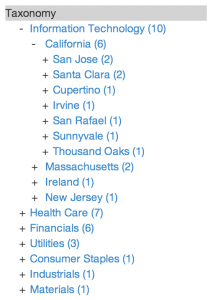If facets are aspects of subjects, then for every group of facets, I am identifying the subject that has those facets.
If I have the facets, height, weight, sex, age, street address, city, state, country, email address, then at the outset, my subject is the subject that has all those characteristics, with whatever value.
We could call that subject: people.
Not the way I usually think about it but follow the thought out a bit further.
For each facet where I specify a value, the subject identified by the resulting value set is both different from the starting subject and, more importantly, has a smaller set of members in the data set.
Members that make up the collective that is the subject we have identified.
Assume we have narrowed the set of people down to a group subject that has ten members.
Then, we select merge from our application and it merges these ten members.
Sounds damned odd, to merge what we know are different subjects?
What if by merging those different members we can now find these different individuals have a parent association with the same children?
Or have a contact relationship with a phone number associated with an individual or group of interest?
Robust topic map applications will offer users the ability to navigate and explore subject identities.
Subject identities that may not always be the ones you expect.
We don’t live in a canned world. Does your semantic software?

